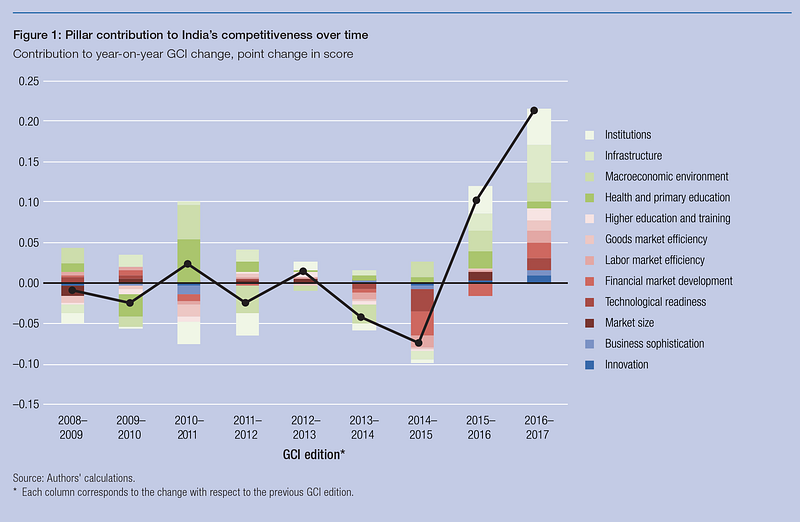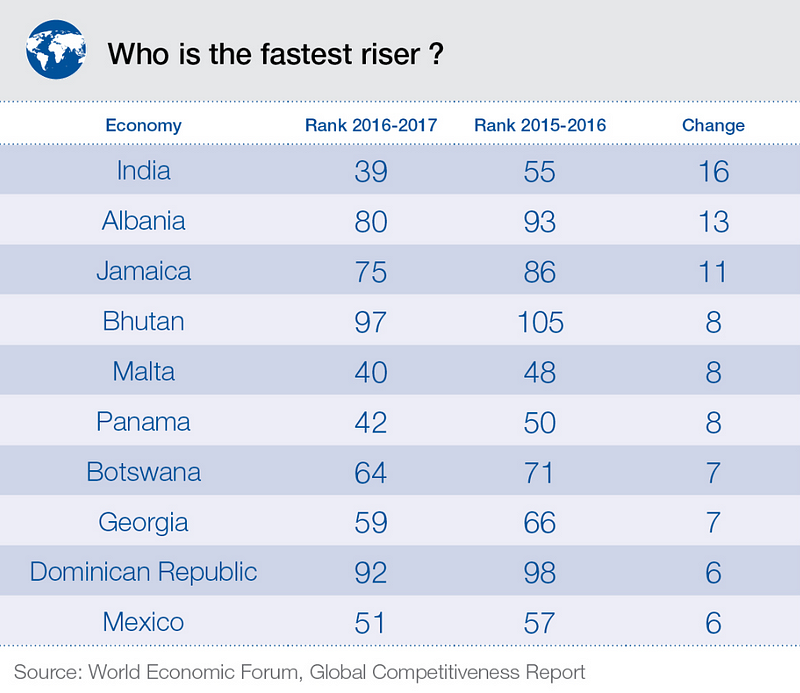Here’s how India became more competitive than China




What is competitiveness?
These are the world’s most competitive economies
Temas de relações internacionais, de política externa e de diplomacia brasileira, com ênfase em políticas econômicas, em viagens, livros e cultura em geral. Um quilombo de resistência intelectual em defesa da racionalidade, da inteligência e das liberdades democráticas.
Este blog trata basicamente de ideias, se possível inteligentes, para pessoas inteligentes. Ele também se ocupa de ideias aplicadas à política, em especial à política econômica. Ele constitui uma tentativa de manter um pensamento crítico e independente sobre livros, sobre questões culturais em geral, focando numa discussão bem informada sobre temas de relações internacionais e de política externa do Brasil. Para meus livros e ensaios ver o website: www.pralmeida.org. Para a maior parte de meus textos, ver minha página na plataforma Academia.edu, link: https://itamaraty.academia.edu/PauloRobertodeAlmeida;
Meu Twitter: https://twitter.com/PauloAlmeida53
Facebook: https://www.facebook.com/paulobooks




09:00–09:20
|
Opening
|
§ Ambassador Sérgio Eduardo Moreira Lima, President of FUNAG
§ Ambassador Georges Lamazière, Under Secretary
General for Asia and the Pacific
§ Ambassador Li Jinzhang, Ambassador of China to
Brazil
§ Assistant Minister Hu Zhengyue, Vice President of
China Public Diplomacy Association (CPDA)
|
|
09:20–10:40
|
One Decade of the BRICS:
Assessment and Next Steps
|
§ Professor Wu Xiaoqiu, Vice-President of Renmin
University
§ Ambassador Sergio Florencio, Director for
International Economic and Political Relations, IPEA
§ Minister Mariana Madeira, Head of the Division
for BRICS and IBSA, Ministry of Foreign Affairs
§ Minister Benoni Belli, Secretary for
Diplomatic Planning, Ministry of Foreign Affairs
§ Professor Thomas Dwyer, Co-ordinator, BRICS
Studies Project, University of Campinas
|
|
10:40–11:00
|
Coffee Break
|
11:00–12:40
|
Breadth and Depth:
Priorities for BRICS Co-operation
Moderator : Professor WangWen,
Executive Dean Chongyang Institute for Financial Studies, Renmin University
of China
|
§ Mr. Zhao Xiyuan, Secretary-General of China Public
Diplomacy Association (CPDA)
§ Counsellor Rina-Louise Pretorius, Embassy of South Africa to
Brazil
§ XX, Embassy of India to
Brazil
§ XX, Embassy of Russia to
Brazil
§ Professor Zhao Xijun, Deputy Dean of School of Finance, Renmin
University of China
|
|
12:40–14:00
|
Lunch Break
|
14:00– 15:40
|
Financial Co-operation,
Investment and the New Development Bank
Moderator: Minister
Paulo Roberto de Almeida, Director of IPRI
|
§ Professor Murilo Portugal, President of
FEBRABAN
§ Minister Norberto Moretti, Director of the
Department for Financial Affairs and Services, Ministry of Foreign Affairs
§ Professor Wang Wen, Executive Dean, Chongyang Institute for
Financial Studies, Renmin University of China (RDCY)
§ Professor Marcos Troyjo, Director, BRICLab, Columbia University
§ XX, Embassy of China in Brazil
|
|
15:40–16:00
|
Wrap-up and Closure
|
§ Minister Paulo Roberto de Almeida, Director of IPRI
§ Minister Mariana Madeira, Head of the Division for
BRICS and IBSA, Ministry of Foreign Affairs
§ Professor Wu Xiaoqiu, Vice-President of Renmin
University
|
|
|



